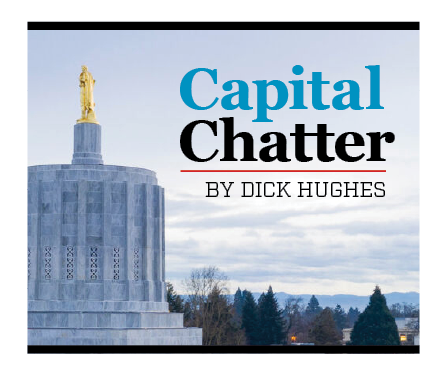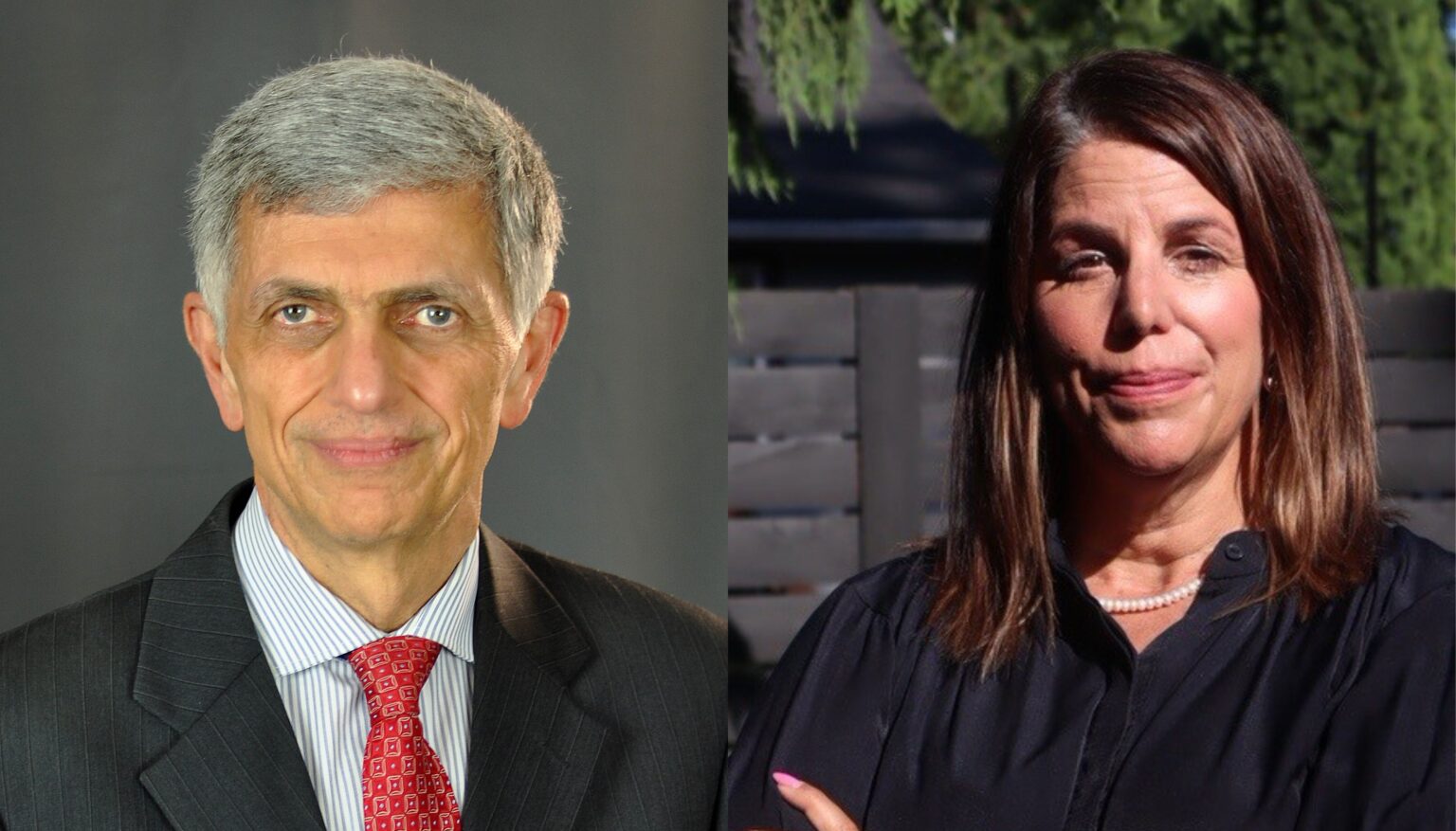Capital Chatter: Eight things to know about Gov. Kotek’s $138 billion proposed budget
Published 4:30 pm Thursday, December 5, 2024

- capital chatter logo
Good golly! Oregon’s state government is on the path to spend nearly $138 billion during the next two years.
But don’t get too excited about the 10% spending boost. Regardless of whether you’re a winner or a loser in Democratic Gov. Tina Kotek’s proposed budget for 2025-27, here are eight things to know:
Trending
Kotek’s budget is carved in soap, not stone
The one certainty is the 2025 Legislature will fiddle with it. After Kotek presented her budget at a press conference Monday, Democrats and Republicans alike repeated the adage, “The Governor proposes; the Legislature disposes.”
Retiring Sen. Michael Dembrow, D-Portland, described the governor’s budget as “a crucial step, but just the first step.”
Changes are inevitable as lawmakers emphasize their personal priorities and respond to interest groups. But much will remain intact. Legislators don’t have the appetite to re-cook the monthslong budget process undertaken by the myriad state agencies under the governor’s control.
The 2025 legislative session could get ugly
The Nov. 5 election handed Democrats a legislative supermajority, a bare one. If the D’s stick together, they can approve new taxes without winning any Republican support. Of course, such partisan plays would accentuate the state’s political and urban-rural divides.
Trending
At her press conference, Kotek said: “I’m an open door. I will be working with all legislators, regardless of the party, particularly if we have shared interests.”
Republicans immediately criticized her budget.
“Whether it’s schools, addiction, roads or public safety, under Governor Kotek’s leadership, this budget means Oregonians can expect to pay more, but get less,” said a statement from Representative-elect Christine Drazan, Canby, who already is House Republican leader even though she won’t take office until January.
“Governor Kotek’s proposal doubles down on the same failed strategies that have left Oregonians struggling,” said the statement from Senate Republican Leader Daniel Bonham, The Dalles.
It also will not sit well with Republicans that Kotek proposed millions of dollars for “Safeguarding Progress: Protecting Oregon values” — that is, fighting some of incoming President Donald Trump’s initiatives.
Kotek remains consistent
Her budget emphasized her ongoing priorities: housing and homelessness; mental health, substance abuse treatment, including the Measure 110 reforms, and related behavioral health; and early childhood and K-12 education.
The governor avoided the elephant in the room
The big, big and big issue for the 2025 Legislature: How to finance Oregon’s transportation system, which faces a huge shortfall. Despite weeks of legislative hearings and task force meetings, a consensus funding proposal has not publicly emerged.
Kotek proposed a $1.75 billion increase in the State Highway Fund but doesn’t say how the money should be raised, leaving that to the Legislature.
“What you’ll see in my budget is a marker of what I think we need to have,” she said in response to my question.
She later added, “$1.75 billion is a minimum number, from my standpoint, to meet our basic needs.”
Oregonians also will pay more in other ways. Kotek wants to include synthetic tobacco products in the tobacco tax program and increase a filing and intervenor fee at the Land Use Board of Appeals.
Meanwhile, one irony of tax law is that Oregonians will shell out more in state income taxes if their federal taxes decrease under the Trump administration.
The overall budget will disappear
Any responsible organization writes an overall budget that people can examine line-by-line, page by page. Not the Legislature.
Kotek presented a 476-page budget proposal. The Legislature’s Ways & Means Committee will break that into small parts. Lawmakers will pass dozens of individual bills to finance state agencies, school spending and other programs.
A budget ultimately creates winners and losers, often pitting interest groups against one another. For example, K-12 officials praised Kotek’s 11% increase in the State School Fund as a good starting point for discussion. In contrast, state university and community college officials said their proposed share of the budget wouldn’t keep up with rising costs.
Public employees will benefit
Kotek allocated $455 million to the Legislative Emergency Board, which handles budget issues when the Legislature is not in session. Of that, $300 million is for future increased pay and benefits for state employees. That money is on top of any increases already in progress.
She also included $75 million for union-represented home care workers and personal support workers who are not state employees.
The state workforce would grow to 48,997 positions, an increase of just over 1,200. (As of July, the state had 5,551 vacancies — an 11.9% vacancy rate.) Those figures do not include the Oregon University System.
And Kotek was adamant that she would not propose more changes to the Public Employees Retirement System, even though higher PERS costs will consume much of her increased state funding for school districts.
“Adjustments we made in 2019 are continuing,” she said of PERS.
Legislative hearings will be arcane
Savvy interest groups engage in the Legislature’s budget minutiae instead of focusing solely on policy issues.
Budget hearings will take place in a State Capitol still under reconstruction, with work noise frequently encroaching on committee meetings and floor sessions. Kotek’s overall budget included $150 million for the construction project during 2025-27.
If you wander into a hearing or watch online, expect to hear lots of acronyms.
Instead of starting from zero, each budget builds on the previous one. CSL, or current service level, refers to the cost — including inflation and compensation increases — for continuing existing programs during the next two-year budget period, or biennium.
The process began with ARBs, or agency request budgets. Kotek told agencies to prepare two scenarios — one with an overall cost increase not exceeding 1% and another with a 10% overall reduction.
Kotek’s team then put together the GRB, the governor’s recommended budget.
What really matters is the LAB, the legislatively adopted budget, consisting of the numerous budget bills to be passed before the Legislature adjourns in June 2025.
Will it work?
Kotek’s recommendations and the ensuing legislative decisions are premised on the quarterly state revenue forecasts. The new chief economist, Carl Riccadonna, and his team presented a rosier outlook last month after altering assumptions in the forecast model.
Amid international conflicts, a new presidential administration, proposed tariffs and other uncertainties, much could go haywire with those predictions, putting the state in a financial bind and forcing cutbacks.
On the other hand, Oregon’s economic future might roll on without a hitch.




